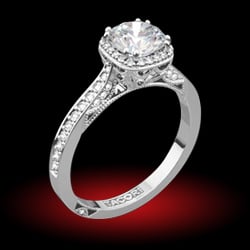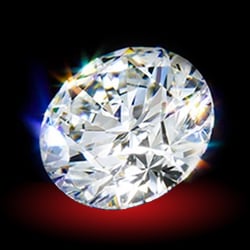muzio
Rough_Rock
- Joined
- Dec 6, 2009
- Messages
- 41
So, out of interest, I took my ring to two different places for insurance appraisal for my new ring (thread here:https://www.pricescope.com/community/threads/opinions-on-this-oec-transitional.202289/).
While the replacement values they came up with were pretty similar, their descriptions were pretty different. Which one should I use as the appraisal for insurance?
One:
Setting: Cast & assembled platinum, with prong and bead diamond setting.
Diamond: Round brilliant with dimensions, colour, clarity copied from GIA report.
Estimated replacement value: $27,200
Two:
Setting: Platinum ladies, handmade unique octagonal top design ring.
Diamond: Old european cut diamond, gauging 8.30 x 8.40 x 5.10. Cut good, clarity VS2, colour K (he thought it was an I before looking at the GIA report).
Estimated replacement value: $30,000
Comment: Diamond may not be readily replaceable due to cut.
So #1 called it an RB instead of an OEC. I asked appraiser #1 about this, and she said it was because GIA called it an RB. Then she back tracked and said, though it has a large cutlet, it was more of an RB than OEC, which I disagree with.
So what do you guys make of this? It seemed like appraiser #2 put more his own opinion into the appraisal. He was very impressed with the cut, and that's why he added the comment about the diamond not being readily replaceable. Would you guys use #2 as your insurance appraisal?
While the replacement values they came up with were pretty similar, their descriptions were pretty different. Which one should I use as the appraisal for insurance?
One:
Setting: Cast & assembled platinum, with prong and bead diamond setting.
Diamond: Round brilliant with dimensions, colour, clarity copied from GIA report.
Estimated replacement value: $27,200
Two:
Setting: Platinum ladies, handmade unique octagonal top design ring.
Diamond: Old european cut diamond, gauging 8.30 x 8.40 x 5.10. Cut good, clarity VS2, colour K (he thought it was an I before looking at the GIA report).
Estimated replacement value: $30,000
Comment: Diamond may not be readily replaceable due to cut.
So #1 called it an RB instead of an OEC. I asked appraiser #1 about this, and she said it was because GIA called it an RB. Then she back tracked and said, though it has a large cutlet, it was more of an RB than OEC, which I disagree with.
So what do you guys make of this? It seemed like appraiser #2 put more his own opinion into the appraisal. He was very impressed with the cut, and that's why he added the comment about the diamond not being readily replaceable. Would you guys use #2 as your insurance appraisal?







300x240.png)